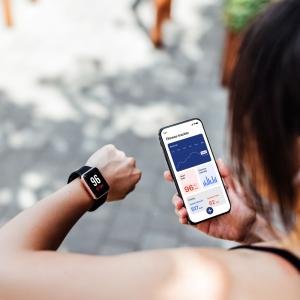NYU Langone’s Heart Rhythm Center Doctors Treat Complex Arrhythmias With Novel Devices & Advanced Techniques

Dr. Larry Chinitz and his team at the Heart Rhythm Center are at the forefront of research and clinical care of conditions that affect the heart's electrical system.
Photo: NYU Langone Staff
In 2018, doctors from NYU Langone’s Heart Rhythm Center, home to one of the busiest cardiac electrophysiology programs in the nation, continued to push boundaries in the treatment of complex arrhythmias and the investigation of novel devices and advanced techniques.
Improving Atrioventricular Pacing With a Leadless Pacemaker
In recent years, a new generation of leadless pacemakers has offered a less-invasive option for brachycardic patients who can benefit from pacing therapy. But unlike conventional pacemakers, these tiny devices—delivered percutaneously to the right ventricle—have been unable to synchronize ventricular pacing with that of the atrium.
A study led by Larry A. Chinitz, MD, the Alvin Benjamin and Kenneth Coyle, Sr. Family Professor of Medicine and Cardiac Electrophysiology, and clinical director of the Leon H. Charney Division of Cardiology, shows that this limitation can be overcome.
In the multisite, international study, 64 patients were implanted with a bullet-sized Micra™ transcatheter pacing system. The device was then programmed with a downloadable algorithm aimed at enabling it to sense atrial contractions through its built-in accelerometer, and to synchronize ventricular pacing accordingly.
Patients were monitored for a median of six months. The results, published in September in the journal HeartRhythm, indicated that accelerometer-based atrial sensing can improve atrioventricular pacing—a function never before reported with a leadless, single-chamber pacemaker.
“The next step is to develop a leadless atrial pacemaker, and test it in coordination with a ventricular implant,” Dr. Chinitz explains. “We think these devices represent the future of pacing.”
Forging New Frontiers in Cardiac Ablation
NYU Langone is at the forefront of developing improved ablation techniques—especially for complex arrhythmias such as atrial fibrillation (AFib), for which success rates lag behind those for simpler disorders.
In 2018, researchers led by Anthony Aizer, MD, assistant professor of medicine, published a pair of studies in the Journal of Cardiac Interventional Electrophysiology and JACC: Clinical Electrophysiology showing that overdrive pacing during ablation enhances lesion quality.
And last May, at the annual Heart Rhythm Society (HRS) meeting, Douglas S. Holmes, MD, assistant professor of electrophysiology, presented the results of a two-year canine model study showing that high-power, short-duration lesions (50 watts at five seconds, rather than the traditional 25 to 30 watts for 30 to 40 seconds) can deliver precise, durable lesions with reduced risk of peripheral injury. Those results have been submitted for journal publication in the coming year.
The Heart Rhythm Center’s leadership in treating arrhythmias was further highlighted at the HRS meeting when two complex procedures—an ablation for AFib using body surface mapping, and a pacemaker implantation using His bundle pacing (HBP) to avoid ventricular dyssynchrony—were broadcast live from NYU Langone to the conference hall.
Blazing New Trails in Left Atrial Appendage Occlusion
New studies from the Heart Rhythm Center could help enhance the adoption of left atrial appendage (LAA) procedures as a stroke-prevention treatment for AFib—the most common heart rhythm abnormality, affecting more than 33 million people worldwide.
Although oral anticoagulants can reduce stroke risk in AFib, these medications are contraindicated or poorly tolerated in many patients. An alternative approach is to close off the LAA, the small pouch at the corner of the atrium where AFib-related clots typically originate. Several percutaneously delivered devices have been developed for this purpose in recent years.
NYU Langone researchers have led clinical trials for many of these technologies, including the plug-like Watchman™ implant (approved by the U.S. Food and Drug Administration in 2015) and the LARIAT® Suture Delivery Device, which uses a Teflon-coated loop to ligate the LAA.
The Heart Rhythm Center is currently participating in investigational device exemption (IDE) trials of newer implants—the WaveCrest®, Amulet, and the Pinnacle FLX designed to treat a wider range of LAA anatomies or otherwise improve on existing devices.

